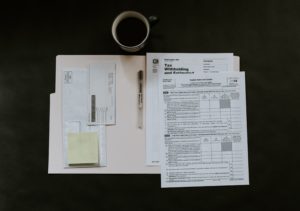With inflation hovering about 9% these days, I find it’s taking its toll as more and more people can’t afford to save. The high cost of gasoline, groceries and health care are competing for consumer’s dollars and unfortunately saving for retirement is getting the short end of the stick.
Just how worrisome is it? Well, recent U.S. Commerce Department data reveals that the personal saving rate declined to 6.2% in March of this year, the lowest level in about a decade₁. Not only that, but 25% of survey respondents indicate having no emergency savings at all₂. So, it’s no surprise that a staggering 56% of Americans are unable to cover an unexpected $1,000 bill with savings₃.
With rising costs on so many fronts, many working Americans are finding that they need to dip into their savings to pay for everyday essentials. Add in an unexpected expense and you just might be one step closer to a personal financial crisis, one which could risk your long-term financial security. Folks, I’ve had numerous conversations with retirees and pre-retirees over the past year about how to stretch their dollars to make ends meet without sacrificing their long-term retirement plans, especially when an emergency pops up.
One example is a conversation I had with “Chris”, a 54-year-old mortgage agent near Boston. Chris’s home caught fire in July due to an electrical short, and the cost to repair it was a real shock to him. He told me that he had to take a withdrawal from his company’s 401(k) plan to pay for the repairs, which he hated to do. Not only was he hit with taxes on these funds, but he had to pay an additional 10% penalty to the IRS for taking his retirement funds early. Being just 5 years away from retirement, this really hurt, and Chris may even find himself working an extra year or two to make up for it.
In the first year of the pandemic, lawmakers overwhelmingly approved a change allowing retirement savers impacted by the pandemic to withdraw a portion of their savings from a 401(k) or IRA immediately — with no tax penalty and many Americans relied on this flexibility to weather the challenging financial times brought about by the pandemic. However, this emergency relief expired at the end of 2020, so Chris wasn’t able to benefit from it.
With fewer pension plans available these days, Americans are taking on more responsibility for their retirement savings, so financial emergencies like Chris experienced have a bigger impact than they have for prior generations.
The good news is that Congress understands this and has the opportunity to pass legislation to help. Co-sponsored by Senators James Lankford, R-Okla., and Michael Bennet, D-Colo., the Enhancing Emergency and Retirement Savings Act has been proposed as an enhancement to the SECURE 2.0 Act to help
Americans save more for emergencies while simultaneously building long-term savings. Lankford and Bennet introduced the Act while a companion bill was introduced in the House by Reps. Brad Wenstrup, R-Ohio, and Tom Suozzi, D-N.Y. This is bipartisan legislation is designed, in part, to encourage participation in retirement plans by giving them additional flexibility and penalty-free access to funds should an emergency hit.
As a refresher, the SECURE (Setting Every Community Up for Retirement Enhancement) Act was signed into legislation by the Senate on December 19, 2019. The original bill made some much-needed adjustments to the country’s retirement system. However, it wasn’t a comprehensive solution to the retirement crisis in America.
Here’s how it would work, in broad terms; The legislation promotes saving earlier for retirement, as well as increasing some limits. It would also make permanent new rules regarding the use of retirement funds in the case of disaster. For example, those saving in workplace retirement plans or an IRA are allowed to make one penalty-free “emergency distribution” per calendar year. These withdrawals are limited to vested amounts over the minimum $1,000 account balance, with an annual maximum withdrawal of $1,000.
Plan participants would be required to replenish the withdrawn amount to the plan before an additional emergency distribution from that same plan is permitted to encourage them to “repay” this amount via continued savings efforts. One key goal is for this flexibility to encourage more Americans to save by removing the hesitation that the money is unreachable in an emergency.
Some additional proposed features beyond the scope of this topic today include enhanced tax credits for the cost of new retirement plans, reform of family attribution rules, top-heavy relief for excludable employees, retroactive deduction of profit-sharing increases after the end of the year, boosts incentives for small businesses offering retirement plans, and offers those age 60 and over more flexibility for saving as they approach retirement.
Taken together, these proposals in the House and Senate can give Americans multiple tools to help pay for life’s surprises. They’ll enable them to take better control of their financial futures and create the conditions needed for a dignified retirement.
While there’s some time before the proposed legislation enacting SECURE 2.0 will be approved, these are exciting changes that will help millions of hard-working employees shore up their retirement savings, despite a financial emergency.
So as always – be vigilant and stay alert, because you deserve more!
Happy Labor Day.
Jeff Cutter, CPA/PFS is President of Cutter Financial Group, LLC, an SEC Registered Investment Advisor with offices in Falmouth, Duxbury, and Mansfield, MA. Insurance offered through its affiliate, CutterInsure, Inc.
We do not offer tax or legal advice. Jeff can be reached at jeff@cutterfinancialgroup.com. This information is intended to provide general information. It is not intended to offer or deliver investment advice in any way. Information regarding investment services is provided solely to gain a better understanding of the subject of the article. Different types of investments involve varying degrees of risk, including the potential for loss. Therefore, it should not be assumed that future performance of any specific investment or investment strategy will be profitable. Insurance product guarantees are backed by the financial strength and claims-paying ability of the issuing company. Market data and other cited or linked-to content is based on generally available information and is believed to be reliable. Cutter Financial does not guarantee the performance of any investment or the accuracy of the information contained in this article. Cutter Financial will provide all prospective clients with a copy of Cutter Financial’s Form ADV 2A, Appendix 1, applicable Form ADV 2Bs and Form CRS as well as the firm privacy policy. Please contact us to request a free copy via .pdf or hardcopy. 1. https://tinyurl.com/9yxe3fhj 2. https://tinyurl.com/32uavy4c 3. https://tinyurl.com/2kpjf9hn







